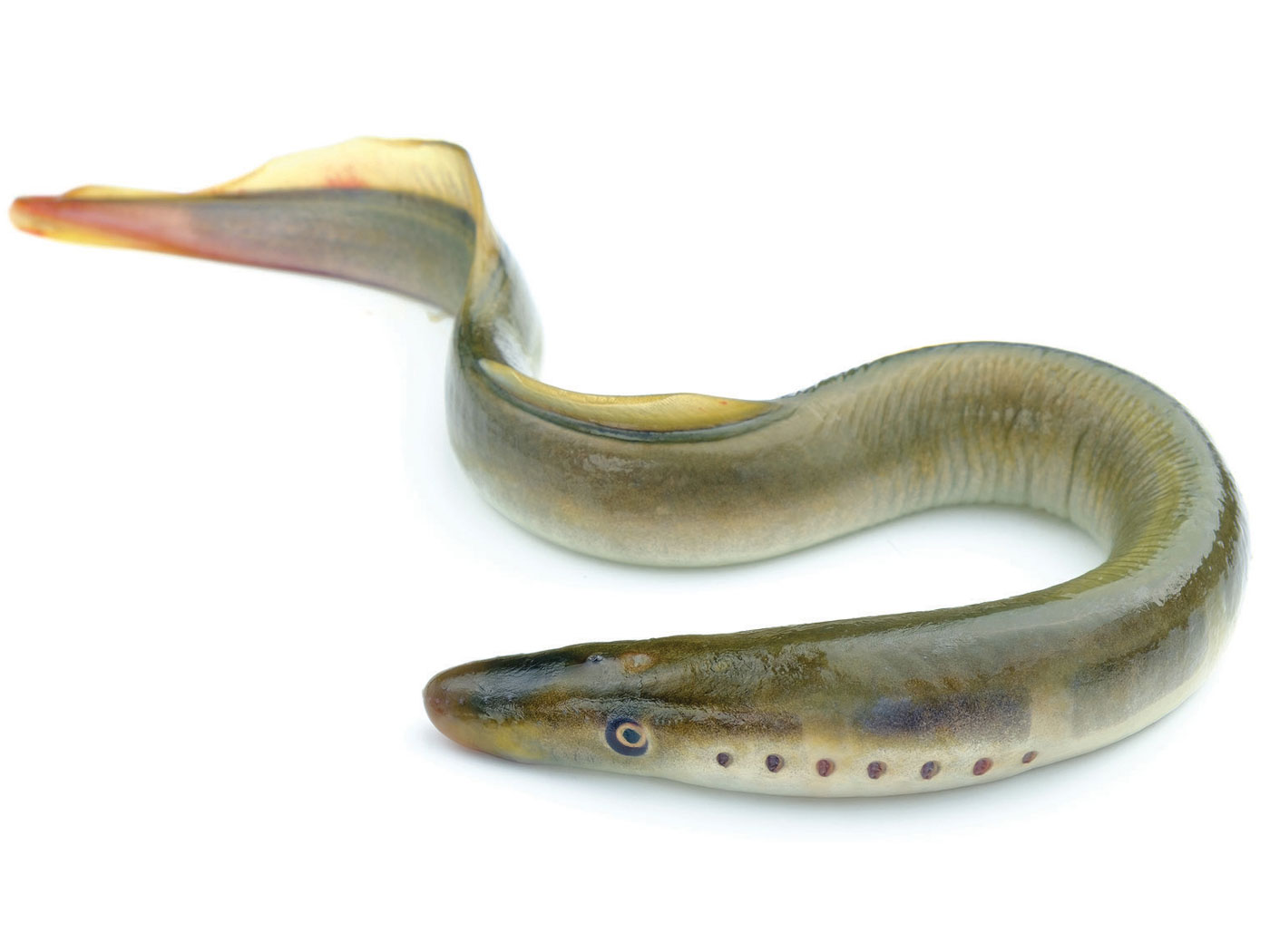Analysis of cut marks on Ice Age bones of a large armadillo-like glyptodont from Argentina suggests that humans killed and used these creatures for food.1,2 The cut marks belonged to fossil remains of a glyptodont in the genus Neosclerocalyptus that was discovered on the banks of the Reconquista River in eastern Argentina. By old-age reckoning, these bones are more than 20,000 years old. The cut marks were consistent with those made by stone tools on other fossil bones.
Statistical analysis finds that cut marks on parts of the pelvis, tail, and body armor are consistent with known marks made by stone tools, and the placement of these marks is consistent with a butchering sequence targeting areas of dense flesh.1
Glyptodonts have been described as giant armadillo-like animals. However, mitochondrial DNA analysis suggests that glyptodonts were closely related to armadillos and might actually be giant armadillos.3,4 Doedicurus, one of the largest glyptodonts, is thought to have weighed as much as a ton. Neosclerocalyptus, though not as large, would still be considered gigantic compared to today’s armadillos. Neosclerocalyptus is thought to have been 1.8 meters (5.9 feet) long, with a mass of 300 kilograms (or a weight of 660 pounds).5
This news should be of interest to Bible-believing Christians for a number of reasons. First, mainstream researchers were surprised at this evidence that humans were in South America at such an “early” date.5 Obviously, creationists think this age assignment of 20,000 years or so is greatly inflated. Rather, these fossils likely date back to the post-Flood Ice Age just a few thousand years ago. During the post-Flood Ice Age, humans migrated away from the Middle East after the dispersion at Babel, using boats and land bridges to make the trip from Eurasia to North and South America.6,7
A second reason for interest is the enormous size of this armadillo-like glyptodont, since studies of living animals have shown that giantism and delayed maturation are often associated with greater longevity.8 Indeed, creation researchers Donald Patten and Greg Beasley made such a connection decades ago.9,10 The Bible gives no hint or suggestion that the greater longevity of the Genesis patriarchs was supernatural in origin. If indeed the explanation is natural, then it is difficult to imagine a mechanism that would have increased human longevity (more pristine genomes, abundant food, different atmospheric composition, etc.) that would not also have increased animal longevity. Hence, evidence of giantism, which is abundant in the fossils, could be indirect evidence of greater animal longevity in both the pre-Flood and immediate post-Flood worlds. The same is true of evidence for delayed maturation found in at least some fossils.11–13
Also intriguing is strong fossil evidence of an apparent worldwide decrease in mammal body size at the end of the Ice Age, noticed even by evolutionary researchers more than 40 years ago.14,15 Since human lifespans were decreasing during the post-Flood Ice Age, it would make sense for animal lifespans to also decrease. And given the correlations between longevity and body size, a decrease in longevity might be accompanied by a decrease in body size, as well.
ICR research is slowly but methodically revealing both direct and indirect evidence that animals once experienced much greater longevity than their modern-day descendants. And we’re not finished! Two technical papers and two shorter technical articles have already been submitted for publication, and we hope to share these results in popular-level articles in the days ahead.
References
-
PLOS, “Evidence of Butchery of Giant Armadillo-Like Mammals in Argentina 21,000 Years Ago,” ScienceDaily, July 17, 2024, https://www.sciencedaily.com/releases/20
24/07/240717162440.htm. - Mariano Del Papa et al., “Anthropic Cut Marks in Extinct Megafauna Bones from the Pampean Region (Argentina) at the Last Glacial Maximum,” PLoS ONE 19, no. 7 (2024): e0304956.
- Frédéric Delsuc et al., “The Phylogenetic Affinities of the Extinct Glyptodonts,” Current Biology 26, no. 4 (2016): 155–156.
-
“Extinct Glyptodonts Really Were Gigantic Armadillos, Ancient DNA Shows,” Phys.org, February 22, 2016, https://phys.org/news/2016-02-extinct-gl
yptodonts-gigantic-armadillos-ancient.ht
ml#google_vignette. -
Katie Hunt, “Giant Armadillo Fossil Reveals Humans Were in South America a Surprisingly Long Time Ago,” CNN, July 17, 2024, https://www.cnn.com/2024/07/17/science/g
iant-armadillo-fossil-early-humans-ameri
cas/index.html. -
Brian Thomas, “Boats and Jewelry: ‘Stone Age’ People Were Surprisingly Modern,” Creation Science Update, January 25, 2010, https://www.icr.org/article/boats-jewelr
y-stone-age-people-were. - Timothy Clarey, “The Ice Age and the Scattering of Nations,” Acts & Facts, August 2016, 9.
- See summary in Leo Hebert III, “Allometric and Metabolic Scaling: Arguments for Design . . . and Clues to Explaining Pre-Flood Longevity?” Proceedings of the International Conference on Creationism 9, no. 18 (2023): 206–227.
- Donald W. Patten, “The Longevity Accounts in Ancient History,” Creation Research Society Quarterly 19, no. 1 (1982): 40–52.
- Greg Beasley, “Pre-flood Giantism: A Key to the Interpretation of Fossil Hominids and Hominoids,” Journal of Creation 4, no. 1 (1990): 5–55.
- Jake Hebert, “Oysters and Pre-Flood Longevity,” Acts & Facts, May/June 2024: 19.
- Jake Hebert et al., “Crassostrea Oyster Fossils Show Evidence of Extreme Longevity,” Creation Research Society Quarterly 60, no. 3 (2024): 171–190.
- Jake Hebert, “Giantism and Delayed Maturation in Fossil Sharks: Evidence for Extreme Longevity?” Creation Research Society Quarterly 60, no. 4 (2024): 267–283.
- Simon J. M. Davis, “The Effects of Temperature Change and Domestication on the Body Size of Late Pleistocene to Holocene Mammals of Israel,” Paleobiology 7, no. 1 (1981): 101–114, especially page 101.
- Jake Hebert, “Late Pleistocene Body Size Reduction: Evidence of a Post-Flood Decline in Longevity?” Journal of Creation 38, no. 1 (2024): 60–66.
Stage image: Statue of giant armadillo
Stage image credit: Copyright © Patricia Curcio. Used in accordance with federal copyright (fair use doctrine) law. Usage by ICR does not imply endorsement of copyright holder.
* Dr. Hebert is a research scientist at the Institute for Creation Research and earned his Ph.D. in physics from the University of Texas at Dallas.





















